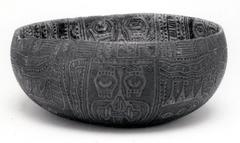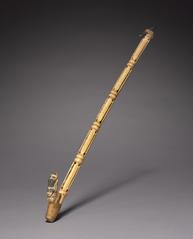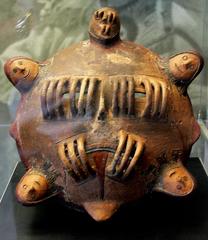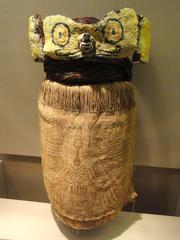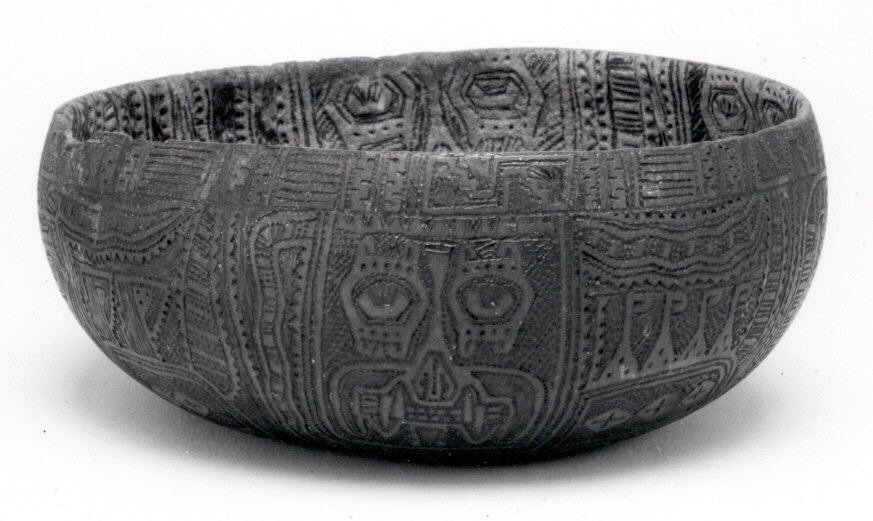
Paracas Culture Visiting Guide: Paracas Peru Tickets, Hours, and Tips
Date: 14/06/2025
Introduction
The Paracas culture is a cornerstone of Peru’s pre-Columbian heritage, flourishing on the arid southern coast from around 800 BCE to 100 BCE. Celebrated for its sophisticated textiles, enigmatic geoglyphs, and elaborate burial traditions, Paracas laid the groundwork for later Andean societies, most notably the Nazca. Today, the Ica region is home to a wealth of archaeological treasures, including the Paracas Necropolis, Cavernas, and the iconic Paracas Candelabra geoglyph. These sites offer invaluable insights into ancient engineering, artistry, and religious life.
This guide provides everything travelers and history enthusiasts need to plan a rewarding visit: a detailed account of the Paracas culture’s origins, an overview of must-see sites, practical advice on visiting hours and tickets, and expert travel tips. For further reading, please refer to Wikipedia’s Paracas culture entry, the Paracas Peru official site, and Peru For Less travel guides.
Contents
- Origins and Development of the Paracas Culture
- Major Archaeological Sites in the Ica Region
- Burial Practices and Funerary Art
- Artistic and Technological Achievements
- Cultural and Religious Context
- Visitor Information: Hours, Tickets, and Travel Tips
- Frequently Asked Questions (FAQ)
- Conclusion
- References
Origins and Development of the Paracas Culture
The Paracas civilization emerged in the Ica region, overcoming harsh desert conditions with innovative irrigation and water management systems (Scribd). Archaeological findings reveal several developmental phases, each marked by evolving social structures, burial customs, and artistic expressions. The Paracas culture established the foundation for Andean societies and directly influenced the Nazca, as seen in burial sites and artistic motifs (Wikipedia).
Major Archaeological Sites in the Ica Region
Paracas Peninsula, Necropolis, and Cavernas
The Paracas Peninsula is the epicenter of archaeological discoveries, including the Paracas Necropolis and Cavernas (Wikipedia; Paracas Peru). Excavations by Julio C. Tello in the 1920s uncovered underground tombs containing multiple burials, each wrapped in exquisitely woven textiles—some of the most sophisticated in pre-Columbian America (Peru For Less).
The Cavernas feature bottle-shaped shaft tombs filled with ceramics, obsidian tools, and jewelry. The Ocucaje complex documents the transition from Paracas to Nazca, key for understanding Andean cultural evolution (Wikipedia).
Paracas Geoglyphs and the Candelabra
The Paracas Candelabra, a massive hillside geoglyph measuring approximately 170 meters tall, is visible from up to 19 kilometers out at sea (Earth Travel Unlimited). Radiocarbon dating places its creation around 200 BCE, predating the Nazca Lines. While its purpose is debated, theories include use as a navigational aid, religious symbol, or astronomical marker (Wikipedia; The Ancient Connection). Other, smaller geoglyphs have been discovered in the Palpa region, typically etched onto hillsides (Wikipedia).
Burial Practices and Funerary Art
The Paracas people practiced elaborate funerary customs. The deceased were typically seated, wrapped in layers of vibrant, iconographically rich textiles, and accompanied by grave goods such as ceramics, tools, and jewelry (Scribd; Tourist Secrets). Some mummies exhibit cranial deformation—a sign of high status—and evidence of trepanation, revealing advanced medical knowledge (Ellie’s Travel Tips).
Artistic and Technological Achievements
Textile Production
Paracas textiles are among the finest from ancient Peru, crafted from cotton and camelid fibers and adorned with intricate embroidery and tie-dye techniques (Tourist Secrets). These textiles, often discovered in graves, depict mythological beings and daily life, and their preservation is owed to the desert climate (Scribd).
Ceramics and Crafts
Paracas pottery features bold forms and painted motifs, especially in funerary contexts. The shift from Paracas to Nazca ceramics is well-documented at Ocucaje (Wikipedia). Artisans also produced obsidian tools, shell jewelry, and gold ornaments, trading widely across the Andes (Peru For Less).
Water Management
The Paracas developed advanced irrigation systems, including canals and subterranean aqueducts, enabling agriculture in an arid landscape (Travel Buddies Peru). Their innovations influenced later Andean civilizations.
Cultural and Religious Context
Paracas iconography is dominated by supernatural beings, notably the “Oculate Being” with large, staring eyes (Wikipedia). The society constructed huacas (sacred sites) and geoglyphs, integrating ritual and landscape. While religious practices evolved under the Nazca, core traditions like textile production and geoglyph construction persisted.
Visitor Information: Hours, Tickets, and Travel Tips
Paracas Necropolis and Cavernas
- Hours: Daily, 9:00 AM–5:00 PM
- Tickets:
20 PEN ($5 USD), with discounts for students and locals - Guides: Tours last 1.5–2 hours and are highly recommended
Paracas Candelabra
- Best Viewed: Boat tours from Paracas Bay, departing 8:00 AM–4:00 PM
- Tickets: 50–80 PEN (~$13–$20 USD)
- Note: Access to the hillside is restricted to preserve the geoglyph
Julio C. Tello Museum
- Hours: Tuesday–Sunday, 9:00 AM–4:00 PM
- Tickets:
10 PEN ($3 USD) - Features: Paracas textiles, mummies, and artifacts
Accessibility and Practical Tips
- Terrain may be uneven; wear sturdy shoes
- Bring sun protection and water
- Early visits help avoid crowds and heat
- Photography is allowed at most sites; check for restrictions
- Hiring local guides benefits both visitors and the community
Getting There
- Paracas is ~260 km south of Lima (3.5–4 hours by bus or car)
- Accommodation ranges from budget hostels to luxury resorts
Frequently Asked Questions (FAQ)
What are the Paracas Candelabra visiting hours?
The geoglyph can be viewed from boat tours departing 8:00 AM–12:00 PM or later, year-round.
How do I purchase tickets?
Buy tickets for archaeological sites and boat tours on-site or via authorized operators. Advance booking is recommended, especially in peak season.
Are the sites accessible for people with disabilities?
Some museums and visitor centers are accessible; terrain at archaeological sites may be challenging.
Are guided tours necessary?
Not mandatory, but highly recommended for deeper context and site preservation.
What should I bring?
Sun protection, water, comfortable shoes, and a camera.
Conclusion
Paracas is a must-visit destination for anyone interested in ancient cultures, archaeology, or natural beauty. Its archaeological sites, world-class museum, and stunning landscapes offer a profound look into Peru’s pre-Columbian legacy. Plan ahead by checking visiting hours, booking tickets and guided tours, and respecting preservation guidelines. For up-to-date travel information, download the Audiala app and follow us on social media.
Visuals and Media Suggestions
- High-resolution photos of Paracas textiles, the Candelabra from a boat, the Necropolis, and museum artifacts (with descriptive alt text)
- Maps showing site locations in the Ica region
- Virtual tours or video clips from the Julio C. Tello Museum
Related Articles
References
- Paracas culture – Wikipedia
- Paracas Peru – Official Information
- Peru For Less – Paracas Travel Guide
- Scribd – Paracas Culture Documentation
- Tourist Secrets – Paracas Peru Guide
- Ellie’s Travel Tips – Paracas Peru
- Earth Travel Unlimited – Paracas Candelabra
- Travel Buddies Peru – Paracas Guide
- EBSCO Research Starters – Paracas Culture
- Nazcahead – Paracas Culture Art and Mummification
- Archeology Dalatcamping – Paracas Necropolis Overview
- Mexicohistorico – Paracas Culture and Influence
- Peruforless – Paracas National Reserve
- The Ancient Connection – Paracas Candelabra
- History’s Mysteries – Paracas Candelabra
- Next Level of Travel – Paracas Tours
- Encounters Travel – Paracas National Reserve
